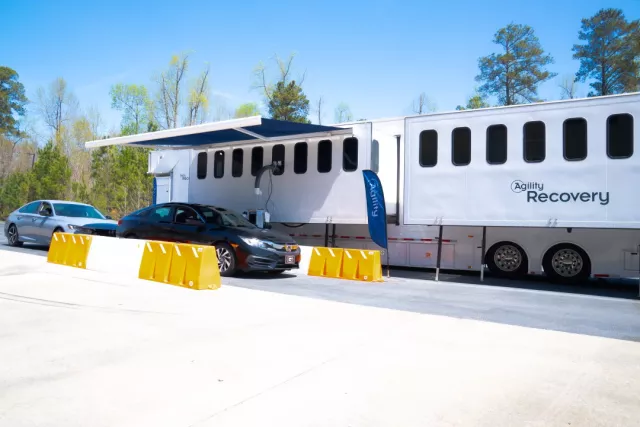Key Aspects of a Mature Business Continuity Program

Achieving business continuity maturity presents its challenges: the volume of processes involved, the peculiarity of each business, organizational buy-in. However, the business benefits of establishing a mature business continuity program go beyond managing risk and complying with regulations, contributing to a company's unique value proposition, employee retention, and future success.
Business resilience is becoming a higher priority for boards and senior management. An escalating complexity of cyberattacks, increased activity in natural and human-caused disasters, intricacy in processes and IT, reliance on third parties, data management—all these factors increase the chances for interruptions, making their impact more drastic.
Top Business Challenges in Responding to COVID-19
Disasters can happen to anyone, anywhere, which reiterates the importance for businesses to create, maintain, and test business continuity and incident management plans at least annually. Also, businesses need to have up-to-date pandemic business continuity plans that incorporate lessons learned over the past couple years. Many scientific community experts point to globalization as a driver for increasing odds of virus outbreaks in the future.
- The ability to respond quickly and effectively when working remote.
- Cybersecurity issues due to employees working from home.
- Responding to simultaneous disruptions – the pandemic further complicated recovery efforts in the event of other business disruptions like natural disasters.
- Effective communication in a crisis.
- Supporting the health and safety of employees. This finding may indicate that many businesses need to bolster their plans, testing, and BC tools to better support their people’s well-being going forward.
- Maintaining employee productivity and morale, which proves some companies are struggling with adapting to a work-from-home strategy.
Key Aspects of a Mature Business Continuity Model
In a continuously developing environment, the traditional reactive approach must be replaced by proactive, nimble methodologies.
At Agility, we refer to a resilient approach that focuses on resilience planning, testing, and complete recovery. Resilient organizations establish alternative ways of servicing their clients as part of their business continuity and risk management strategy, including using recovery locations to provide critical business services when digital channels are down.
A maturity model demonstrates if an organization can achieve continuous improvement. It explains whether a business is being stagnant and the processes that need to be revisited. Organizational growth is fueled by creating review or auditing processes that need to be applied regularly to business processes to evaluate their effectiveness, identify improvements, and implement them.
Building our industry credibility is what led to creating our business continuity maturity model. We involved multiple stakeholders, customers, and prospects, analyzed our acquisition strategy, and conducted market research. A result is an impactful tool that presents a thought leadership stance, a clear and unified message with a customer-centric market approach.
Key Aspects of Mature Business Continuity Programs
|
Aspects |
Resilient Approach |
Conventional Approach |
|
Administration/ Management
|
• Direct involvement of c-suite in processes; • BC integrated into various business processes and metrics; • Continuous testing and reporting to drive improvement. |
• Role of senior management is reactive; • BC is not included in risk assessment or other metrics; • Compliance-type updates. |
|
Organizational Focus/Company Integration
|
Cross-departmental assessment of the impact of disruption; • Streamlined communication; • Recognition of org interdependencies and critical assets (systems, data, processes, people). |
• Business units/departments are considered individually; • Communication silos. |
|
Risk Assessment and Testing
|
• Regularly updated or new BI scenarios based on recent events and forward-looking risk assessment. |
• Generic BI scenarios on rotation across various departments with standard RTOs. |
|
Vendor Management/ Supply Chain |
• Involvement in and understanding of the third party BC processes. |
• No knowledge or communication with vendors regarding their resilience. |
The Business Continuity Process Cycle
Establishing and maintaining the culture of preparedness in the organization is an ongoing process of improvement. The development and advancement of business continuity planning are based on new inputs, data, and findings from actual incident management and organizational response. Companies that have a central place for the incident history can manage future incidents more efficiently and incorporate this knowledge into their adaptable plans, which help them constantly improve their business continuity process.
The business world has changed dramatically over the past 20 years, with the potential for disruption coming faster, more frequent, and more devastating at every turn. Climate change, cybersecurity, and workplace violence have all escalated in the past few years, and none of these were on the horizon 20 years ago. To help businesses quickly prioritize their business continuity process, we've pulled together more than three decades of knowledge and experiences over thousands of companies into a Modern Business Continuity Model.
Agility has observed market and industry changes and can share this market knowledge and best practices with everyone in our community. It's the entire reason for our success and sustainability over the past 30 years. Not only can we help businesses deal with immediate incidents like the current pandemic, but we can help your organization take the best practices aggregated across numerous businesses and incorporate them into your plan. This is a unique benefit of our collective experience brought back to your organization. This feeds our mission, our entire business strategy, and is the very reason for our existence.
Our team of experts, technicians, and industry professionals with thousands of recoveries under their belts continue to provide our clients and community with unmatched expertise and the knowledge that can't be acquired in any other way. We blend practical, innovational, and historical methods to address tomorrow's resilience challenges.



